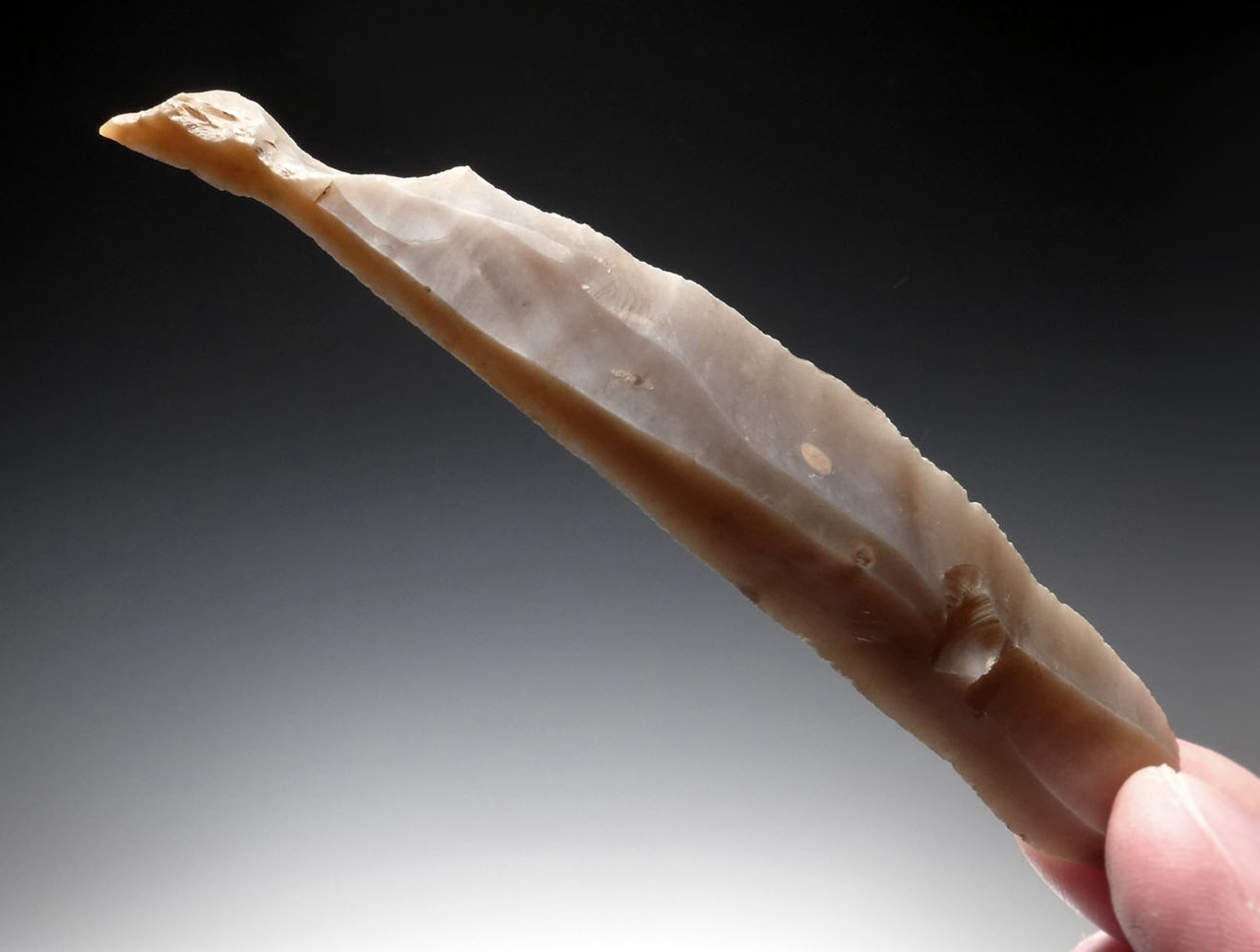Product Description
SEE MORE EUROPEAN NEOLITHIC TOOLS AND ARTIFACTS
This SPECTACULAR Neolithic core-struck flint borer blade knife was collected from an Early Neolithic Period settlement site once inhabited by people of the Funnel-Necked Beaker Pottery Culture (Funnelbeaker) and found in Gram, Southern Denmark. It was made and utilized between 6300 and 4800 years ago.
This European Neolithic flake tool is a UNIFACIAL BORER / BLADE KNIFE and was made on a core-struck flint blade that was further refined and flaked to create the sharp pointed tip shaped like a medical scalpel. A dual-purpose tool such as this could have been used to cut hides and pierce the leather to form tent shelters or garments. Sharp cutting edges are still perfectly preserved and intact on the sides. The point is sharp as originally made and survived thousands of years without being broken, which is very rare!
Original ground minerals and sediment are still intact in hinge fractures - an indicator ONLY seen in AUTHENTIC specimens. This fine set represents supreme examples of workmanship of a skilled tool maker from the earliest of north Europe's farming society. Genuine tools from the Funnel-Necked Beaker Pottery Culture are seldom available for public sale and represent an excellent opportunity to acquire a genuine stone tool artifact from some of the world's first farming peoples!
HISTORY
The earliest food-producing communities of Northern Europe belonged to the Funnel-Necked Beaker Pottery Culture (Funnelbeaker). This culture existed from 4300 BC to 2800 BC, in the Northern-most region of western Europe. The pottery produced by these earliest farmers had a distinctive necked design. The first use of the PLOW, ANIMAL TRACTION and WHEELED TRANSPORT in north-central Europe is attributed to this Neolithic culture. Megalithic chambered tombs were employed and built into long mounds. These mounds made by the Funnel-Necked Beaker peoples still stand today in many parts of north Europe.
Farming in northern and central Europe differed from that of the more temperate southern regions of Europe, the Middle East and north Africa. The harsh winters required crops to be sown in the Spring as opposed to the Fall for the latter. Woodland grazing in the north meant more emphasis on the raising of cattle and pigs compared to the herds of sheep and goats popular in the south.
Neolithic settlements were typically small in population with only about forty to sixty people. The wooden longhouse was the main type of building which housed both people and their livestock. Postholes are all that remain today leaving burials and ritual stone structures as the only remnants of this period. Neolithic burials were either individual or communal. The communal burials were housed in large megalithic structures which were then covered with earth creating a giant mound. Offerings of stone tools, pottery and ornaments were often included in burials.
The Neolithic people of the Funnel-Necked Beaker Pottery Culture represented the first farming and stock-herding society in Northern Europe.
 US DOLLAR
US DOLLAR
 EURO
EURO
 AUSTRALIAN DOLLAR
AUSTRALIAN DOLLAR
 CANADIAN DOLLAR
CANADIAN DOLLAR
 POUND STERLING
POUND STERLING




















